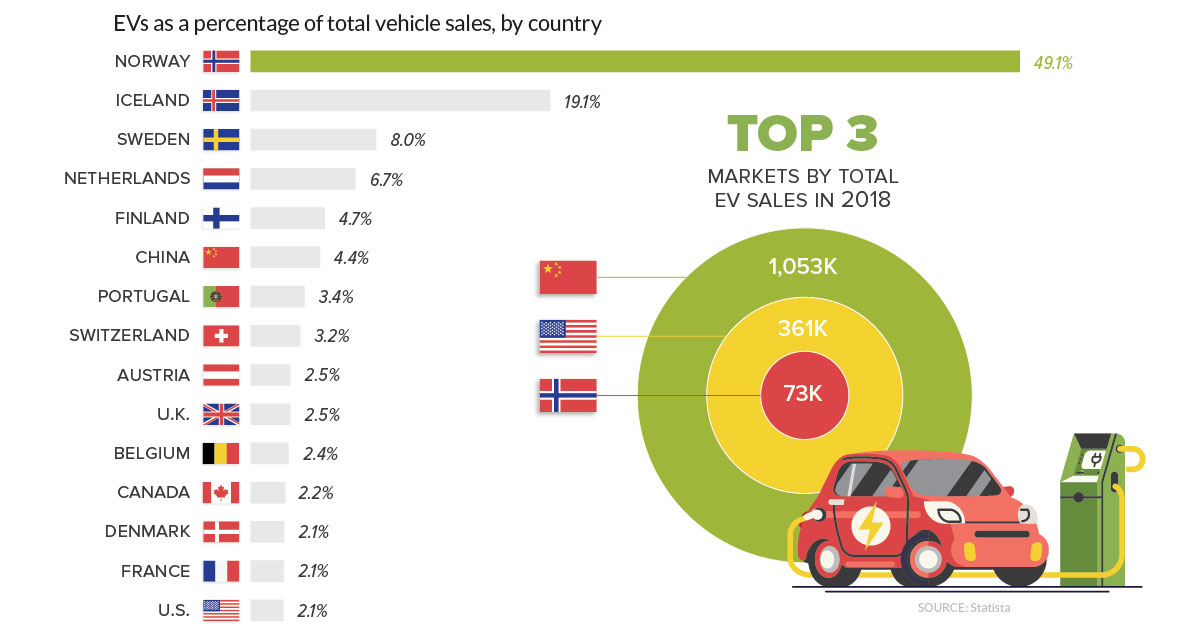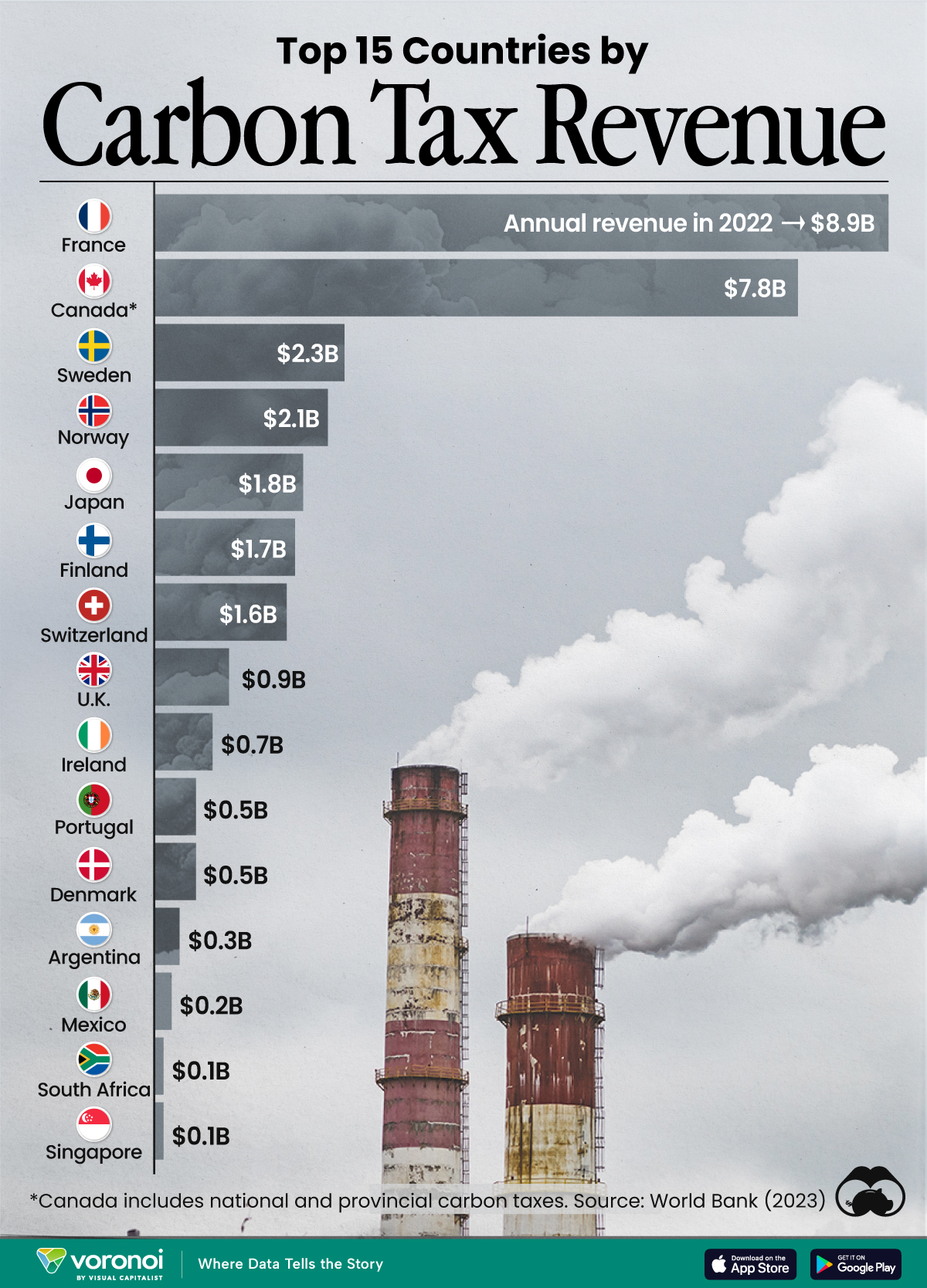Green
Visualizing EV Sales Around the World
It took five years to sell the first million electric cars. In 2018, it took only six months.
The Tesla Model 3 also passed a significant milestone in 2018, becoming the first electric vehicle (EV) to crack the 100,000 sales mark in a single year. The Nissan LEAF and BAIC EC-Series are both likely to surpass the 100,000 this year as well.
Although the electric vehicle market didn’t grow as fast as some experts initially projected, it appears that EV sales are finally hitting their stride around the world. Below are the countries where electric vehicles are a biggest part of the sales mix.
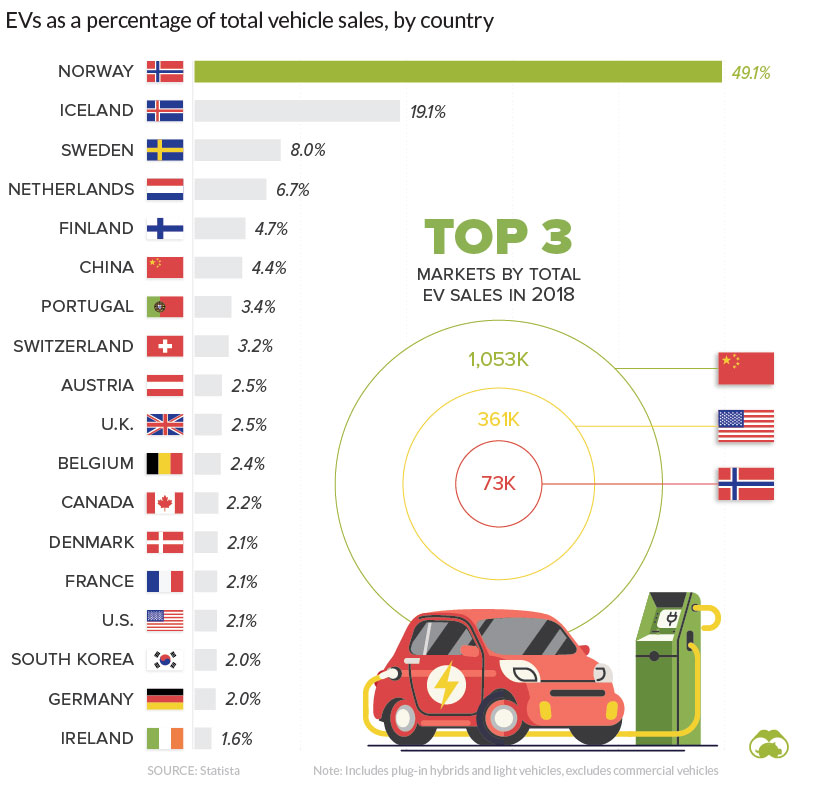
The EV Capital of the World
Norway, after amassing a fortune through oil and gas extraction, made the conscious decision to create incentives for its citizens to purchase electric vehicles. As a result, the country is the undisputed leader in EV adoption.
In 2018, a one-third of all passenger vehicles were fully electric, and that percentage is only expected to increase in the near future. The Norwegian government has even set the ambitious target of requiring all new cars to be zero-emission by 2025.
That enthusiasm for EVs is spilling over to other countries in the region, which are also seeing a high percentage of EV sales. However, the five countries in which EVs are the most popular – Norway, Iceland, Sweden, Netherlands, and Finland – only account for 0.5% of the world’s population. For EV adoption to make any real impact on global emissions, drivers in high-growth/high–population countries will need to opt for electric powered vehicles. (Of course power grids will need to get greener as well, but that’s another topic.)
China’s Supercharged Impact
One large economy that is embracing plug-in vehicles is China.
The country leads the world in electric vehicle sales, with over a million new vehicles hitting the roads in 2018. Last year, more EVs were sold in Shenzhen and Shanghai than any country in the world, with the exception of the United States.
China also leads the world in another important metric – charging stations. Not only does China have the highest volume of chargers, many of them allow drivers to charge up faster.
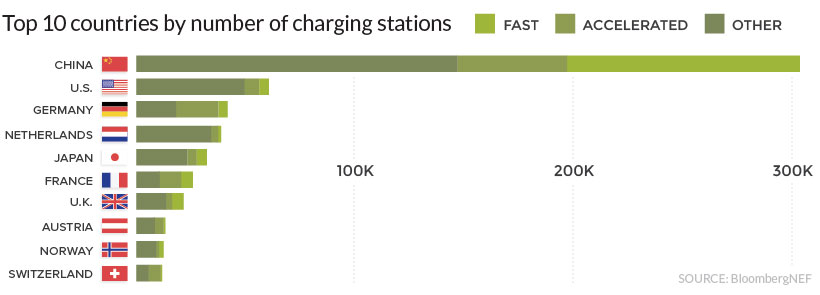
Accelerating from the Slow Lane
In the United States, electric vehicle sales are rising, but they still tend to be highly concentrated in specific areas. In around half of states, EVs account for fewer than 1% of vehicle sales. On the other hand, California is approaching the 10% mark, a significant milestone for the most populous state.
Nationally, EV sales increased throughout 2018, with December registering nearly double the sales volume of the same month in 2017. Part of this surge in sales is driven by the Tesla’s Model 3, which led the market in the last quarter of 2018.
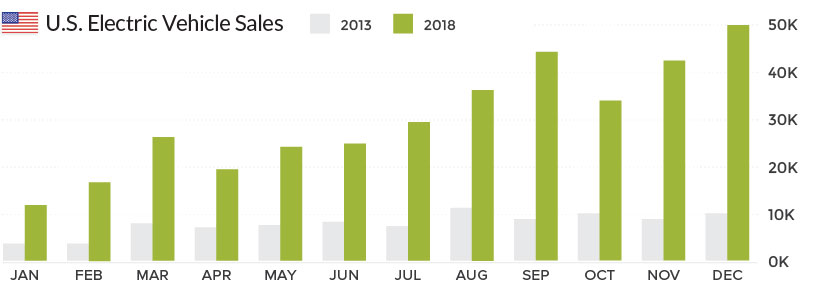
North of the border, in Canada, the situation is similar. EV sales are increasing, but not fast enough to meet targets set by the government. Canada aimed to have half a million EVs on the road by 2018, but missed that target by around 400,000 vehicles.
The big question now is whether the recent surge in sales is a temporary trend driven by government subsidies and showmanship of Elon Musk, or whether EVs are now becoming a mainstream option for drivers around the world.
Green
Ranking the Top 15 Countries by Carbon Tax Revenue
This graphic highlights France and Canada as the global leaders when it comes to generating carbon tax revenue.
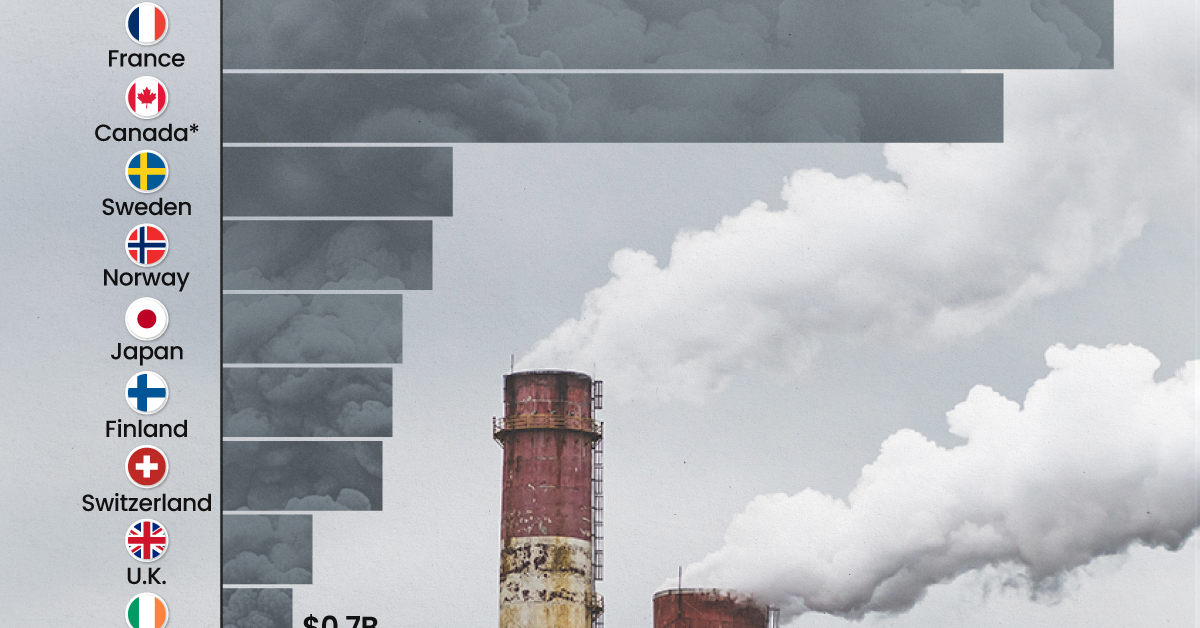
Top 15 Countries by Carbon Tax Revenue
This was originally posted on our Voronoi app. Download the app for free on iOS or Android and discover incredible data-driven charts from a variety of trusted sources.
Carbon taxes are designed to discourage CO2 emissions by increasing the cost of carbon-intensive activities and incentivizing the adoption of cleaner energy alternatives.
In this graphic we list the top 15 countries by carbon tax revenue as of 2022. The data is from the World Bank’s State and Trends of Carbon Pricing Report, published in April 2023.
France and Canada Lead in Global Carbon Tax Revenue
In 2022, the top 15 countries generated approximately $30 billion in revenue from carbon taxes.
France and Canada lead in this regard, accounting for over half of the total amount. Both countries have implemented comprehensive carbon pricing systems that cover a wide range of sectors, including transportation and industry, and they have set relatively high carbon tax rates.
| Country | Government revenue in 2022 ($ billions) |
|---|---|
| 🇫🇷 France | $8.9 |
| 🇨🇦 Canada | $7.8 |
| 🇸🇪 Sweden | $2.3 |
| 🇳🇴 Norway | $2.1 |
| 🇯🇵 Japan | $1.8 |
| 🇫🇮 Finland | $1.7 |
| 🇨🇭 Switzerland | $1.6 |
| 🇬🇧 United Kingdom | $0.9 |
| 🇮🇪 Ireland | $0.7 |
| 🇩🇰 Denmark | $0.5 |
| 🇵🇹 Portugal | $0.5 |
| 🇦🇷 Argentina | $0.3 |
| 🇲🇽 Mexico | $0.2 |
| 🇸🇬 Singapore | $0.1 |
| 🇿🇦 South Africa | $0.1 |
In Canada, the total carbon tax revenue includes both national and provincial taxes.
While carbon pricing has been recognized internationally as one of the more efficient mechanisms for reducing CO2 emissions, research is divided over what the global average carbon price should be to achieve the goals of the Paris Climate Agreement, which aims to limit global warming to 1.5–2°C by 2100 relative to pre-industrial levels.
A recent study has shown that carbon pricing must be supported by other policy measures and innovations. According to a report from Queen’s University, there is no feasible carbon pricing scenario that is high enough to limit emissions sufficiently to achieve anything below 2.4°C warming on its own.
-

 Green2 weeks ago
Green2 weeks agoRanked: Top Countries by Total Forest Loss Since 2001
-

 Travel1 week ago
Travel1 week agoRanked: The World’s Top Flight Routes, by Revenue
-

 Technology1 week ago
Technology1 week agoRanked: Semiconductor Companies by Industry Revenue Share
-

 Money2 weeks ago
Money2 weeks agoWhich States Have the Highest Minimum Wage in America?
-

 Real Estate2 weeks ago
Real Estate2 weeks agoRanked: The Most Valuable Housing Markets in America
-

 Markets2 weeks ago
Markets2 weeks agoCharted: Big Four Market Share by S&P 500 Audits
-

 AI2 weeks ago
AI2 weeks agoThe Stock Performance of U.S. Chipmakers So Far in 2024
-

 Automotive2 weeks ago
Automotive2 weeks agoAlmost Every EV Stock is Down After Q1 2024

